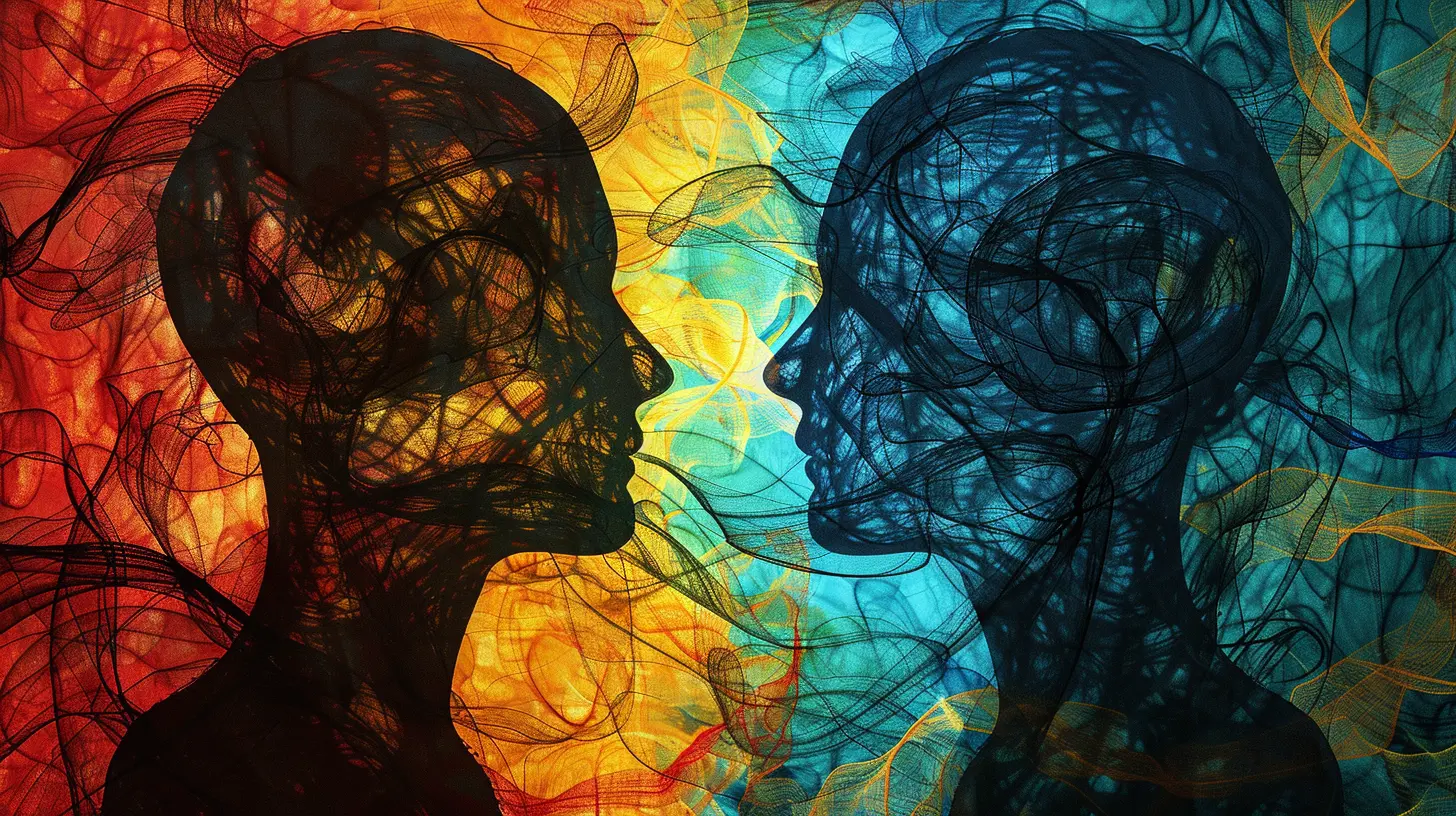Understanding Schizoaffective Disorder and Its Relationship to Schizophrenia
7 February 2025
Mental health is a complex subject, one that often leaves people with more questions than answers. Among the many mental health conditions that exist, schizoaffective disorder and schizophrenia tend to create confusion. People often ask, "Are they the same thing? How do they differ, and where do they overlap?" It’s easy to see why these questions come up. The names sound similar, and they do share some common traits. However, they are indeed distinct disorders.
In this article, we'll dive deep into understanding what schizoaffective disorder is, how it relates to schizophrenia, and the key differences that set them apart. By the end, you should have a clearer idea of what these conditions involve and how they impact those who live with them.
What is Schizoaffective Disorder?
Let’s start with schizoaffective disorder. It’s quite the mouthful, isn’t it? But breaking it down makes it easier to understand. Schizoaffective disorder is a mental health condition that features symptoms of both schizophrenia and mood disorders—like depression or bipolar disorder.In simpler terms, people with schizoaffective disorder experience a mix of psychotic symptoms (like hallucinations or delusions) and significant changes in mood. Because of this dual nature, it’s often misunderstood or misdiagnosed. Some may think the person just has schizophrenia, while others may assume it's solely a mood disorder. But the reality is that schizoaffective disorder sits somewhere in between.
Symptoms of Schizoaffective Disorder
So, what does schizoaffective disorder actually look like?Well, it involves a blend of symptoms related to both schizophrenia and mood disorders. Here are some of the most common:
- Hallucinations: Hearing, seeing, or feeling things that aren’t there. For example, someone may hear voices that no one else can hear.
- Delusions: Strongly held false beliefs, like thinking they have special powers or that someone is plotting against them.
- Disorganized Thinking: Speech that is difficult to follow, jumping from topic to topic without making much sense.
- Mood Swings: Periods of depression or mania. During a manic phase, a person might feel extremely energized or elated, while during depression, they may feel hopeless or exhausted.
- Impaired Functioning: Difficulty in managing daily tasks, maintaining relationships, or holding down a job.
The unique thing about schizoaffective disorder is that these mood episodes occur alongside psychotic symptoms, either simultaneously or in alternating cycles. This dual presentation is key to understanding the condition.
Types of Schizoaffective Disorder
There are two main types of schizoaffective disorder, depending on the type of mood symptoms involved:1. Bipolar Type: This involves episodes of mania or a combination of mania and depression. Think of it as having both the highs and lows of bipolar disorder along with the psychotic symptoms of schizophrenia.
2. Depressive Type: As the name suggests, this type involves only depressive episodes, without the mania. So, the person will experience the low mood of depression along with the psychotic symptoms.
What is Schizophrenia?
Now that we’ve covered schizoaffective disorder, let’s shift gears to schizophrenia. Schizophrenia is a chronic mental health disorder that primarily affects how a person thinks, feels, and behaves. It’s one of the most severe and disabling mental illnesses, and it often requires lifelong treatment.Unlike schizoaffective disorder, schizophrenia doesn’t involve mood symptoms like depression or mania. Instead, the primary symptoms are psychotic in nature, such as hallucinations, delusions, and disorganized thinking.
Symptoms of Schizophrenia
Schizophrenia manifests through a range of symptoms, which are generally divided into positive, negative, and cognitive categories:- Positive Symptoms: These are symptoms that "add" something to the person’s experience, like hallucinations or delusions. They distort reality and can make it difficult for the person to discern what’s real and what isn’t.
- Negative Symptoms: These "subtract" from the person’s ability to function. For example, they may lack motivation, show reduced emotional expression, or withdraw from social interactions. It’s almost like their mind is shutting down parts of their personality.
- Cognitive Symptoms: These symptoms affect thinking and memory. People with schizophrenia may have trouble focusing, organizing their thoughts, or remembering things. This can make daily tasks feel overwhelming.
The Course of Schizophrenia
Schizophrenia typically emerges in the late teens or early adulthood and tends to follow a chronic course. That means once someone is diagnosed, they’ll likely need ongoing treatment to manage their symptoms. The severity of schizophrenia can vary from person to person, with some experiencing periods of relative stability and others facing more severe, long-lasting symptoms.
Schizoaffective Disorder vs. Schizophrenia: Key Differences
So, how do these two conditions differ? At first glance, schizoaffective disorder and schizophrenia share some overlapping characteristics, which can make it tricky to tell them apart. But there are some crucial distinctions:1. Mood Symptoms
The biggest difference lies in the presence of mood symptoms. In schizoaffective disorder, mood changes (like depression or mania) are a core part of the condition. These mood episodes occur alongside psychotic symptoms.In contrast, while people with schizophrenia might experience mood changes, they aren't a defining feature of the disorder. Schizophrenia is primarily characterized by psychotic symptoms.
2. Timing of Symptoms
In schizoaffective disorder, the psychotic symptoms often appear with or without mood episodes. That means someone with schizoaffective disorder could have periods of mood stability but still experience hallucinations or delusions.With schizophrenia, psychotic symptoms are more consistent and aren’t tied to mood changes. Schizophrenia is a continuous condition, whereas schizoaffective disorder can have periods of symptom-free intervals when the mood stabilizes.
3. Diagnosis and Treatment
Diagnosing schizoaffective disorder is notoriously difficult because it involves recognizing both psychotic and mood symptoms. In comparison, diagnosing schizophrenia is more straightforward since it focuses on identifying psychosis without the complication of mood disorders.The treatment for the two disorders also differs. While both may involve antipsychotic medications, people with schizoaffective disorder often require additional treatments for mood stabilization, such as mood stabilizers or antidepressants.
What Causes Schizoaffective Disorder and Schizophrenia?
Both schizoaffective disorder and schizophrenia are believed to result from a combination of genetic, biological, and environmental factors. However, the exact cause remains elusive.Genetic Factors
There’s a strong genetic link for both disorders. If you have a family member with schizophrenia or schizoaffective disorder, your risk of developing one of these conditions increases. But it’s important to remember that genetics alone aren’t destiny—just because someone has the genetic predisposition doesn’t mean they will definitely develop the disorder.Brain Chemistry and Structure
Both disorders are associated with abnormalities in brain chemistry, particularly in the neurotransmitters dopamine and glutamate. Additionally, studies have shown that people with schizophrenia or schizoaffective disorder may have structural differences in their brains, such as enlarged ventricles or reduced gray matter.Environmental Triggers
Factors such as prenatal exposure to infections, stressful life events, or substance abuse can also play a role in triggering the onset of these conditions, especially for those who are genetically predisposed.Living with Schizoaffective Disorder and Schizophrenia
Living with either schizoaffective disorder or schizophrenia can be challenging, but with the right treatment and support, people can lead fulfilling lives. Early diagnosis and intervention are key to managing symptoms and improving quality of life.Treatment Options
1. Medication: Antipsychotic medications are often the first line of treatment for both disorders. In the case of schizoaffective disorder, medications such as mood stabilizers or antidepressants may also be necessary.2. Therapy: Cognitive-behavioral therapy (CBT) can help individuals understand and manage their symptoms. Family therapy or group therapy can also be effective in providing support.
3. Lifestyle Changes: Incorporating healthy habits like regular exercise, a balanced diet, and adequate sleep can improve overall well-being and help manage symptoms.
4. Support Systems: Having a strong support network—whether it’s friends, family, or mental health professionals—can make a huge difference in someone’s ability to cope with the disorder.
Conclusion
Understanding the differences between schizoaffective disorder and schizophrenia is crucial for anyone navigating the complex world of mental health. While both disorders share some similarities, they are distinct in terms of their symptoms, timing, and treatment.If you or someone you know is struggling with either disorder, it’s important to seek professional help. Early intervention and proper treatment can make a significant difference in managing the symptoms and improving quality of life. After all, mental health is just as important as physical health, and no one should have to face these challenges alone.
all images in this post were generated using AI tools
Category:
SchizophreniaAuthor:

Alexandra Butler
Discussion
rate this article
9 comments
Caleb McEachern
Schizoaffective disorder is a complex yet often misunderstood condition that highlights the intricate interplay between mood and perception. By fostering awareness and empathy, we can break down stigmas and empower individuals on their journey toward understanding and healing. Knowledge is the first step toward compassion!
April 4, 2025 at 2:50 PM

Alexandra Butler
Thank you for your insightful comment! Raising awareness and fostering empathy are indeed crucial in supporting individuals with schizoaffective disorder.
Xena Perez
This article effectively clarifies the complexities of schizoaffective disorder and its ties to schizophrenia, emphasizing the importance of understanding these differences for better treatment approaches.
March 1, 2025 at 4:12 AM

Alexandra Butler
Thank you for your feedback! I'm glad you found the article helpful in clarifying these important distinctions.
Uma Conrad
This article provides valuable insights into schizoaffective disorder, highlighting its complexity and the importance of understanding its distinct yet interconnected nature with schizophrenia. Thank you!
February 19, 2025 at 5:19 PM

Alexandra Butler
Thank you for your thoughtful feedback! I'm glad you found the insights valuable.
Oberon Morgan
Thank you for shedding light on this!
February 19, 2025 at 5:59 AM

Alexandra Butler
You're welcome! I'm glad you found it helpful.
Thomas Carr
Schizoaffective disorder intricately intertwines mood disturbances with psychotic symptoms, distinguishing it from schizophrenia. Understanding these nuances is crucial for effective diagnosis and tailored treatment, ultimately improving patient outcomes and quality of life.
February 14, 2025 at 5:39 AM

Alexandra Butler
Thank you for highlighting the importance of recognizing the nuances in schizoaffective disorder. Understanding these distinctions is essential for improving diagnosis and treatment approaches, ultimately enhancing patient care.
Sebastian McGinn
Thank you for shedding light on schizoaffective disorder and its complexities. Understanding its nuances is crucial for empathy and support. Your insights can empower readers to foster compassion and promote awareness, paving the way for better mental health discussions.
February 11, 2025 at 3:40 AM

Alexandra Butler
Thank you for your thoughtful response! I'm glad you found the insights valuable for fostering understanding and compassion.
Sophie Sullivan
Understanding schizoaffective disorder is like trying to find your keys when you've misplaced them in the fridge. It's a little confusing, often surprising, and just when you think you’ve got it, there's always something that throws you off track!
February 9, 2025 at 5:44 PM

Alexandra Butler
That's a clever analogy! Schizoaffective disorder can indeed be perplexing, but recognizing its complexities is an important step toward understanding and support.
Archer Sanchez
Ah, schizoaffective disorder: where your mood swings throw a party, but schizophrenia forgot to RSVP! It's a fascinating dance between emotions and perceptions—like a rollercoaster that also serves snacks. Let’s explore this quirky relationship and maybe grab some popcorn for the ride!
February 9, 2025 at 5:48 AM

Alexandra Butler
Thanks for the clever analogy! Schizoaffective disorder indeed creates a unique interplay of mood and perception. Let’s dive deeper into this dynamic relationship in the article!
Clementine McMeekin
Understanding minds: it's like herding cats, right?
February 8, 2025 at 4:37 AM

Alexandra Butler
Absolutely, it's often unpredictable and complex, much like herding cats! Understanding the mind, especially in disorders like schizoaffective disorder, requires patience and adaptability.
MORE POSTS

Empathy and Mental Health: Understanding the Emotional Impact of Connection

Developing Emotional Intelligence Through Journaling

The Science of Memory: Why We Forget and How to Remember

The Impact of Parental Stress on Child Development

Schizophrenia and the Role of Peer Support Systems

Navigating Conflicting Desires in a Relationship

Cultural Factors and Their Influence on Child Growth